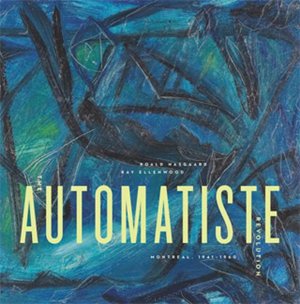The Automatiste Revolution:
Montreal, 1941–1960

Support Canada's History in other ways (more)
by Roald Nasgaard and Ray Ellenwood
Douglas & McIntyre, Vancouver, 2009
160 pp., illus., $60 hardcover
During and immediately following World War II, a group of Montreal contemporary artists was at the forefront of international innovation and debate. Exhibitions in Montreal, Paris, and New York during the 1940s and 1950s showed that their abstract paintings represented unique and often pioneering responses to questions concerning modern art.
The group that was later dubbed the “Automatistes” began in 1942 with weekly meetings at the Montreal studio of painter and art teacher Paul-Émile Borduas. Its members practised not only painting, but also poetry, playwriting, choreography, and dance.
Some were students of Borduas at the École du meuble, and in their youthful vitality they drew a connection between the liberating artistic ideas Borduas found in European surrealist writings and their need to escape the stifling social and political climate during Quebec’s Duplessis era.
The richly illustrated book The Automatiste Revolution, which serves as the catalogue for an eponymously named exhibition, includes a lengthy essay by curator and art historian Roald Nasgaard on the inspirations and innovations of Automatiste painters, as well as writer and translator Ray Ellenwood’s shorter essay “Automatisme beyond ‘the barracks of plastic arts.’” The latter delves into the various writings, choreographic experiments, and collective activities of the group’s members.
None of their activities is better remembered, or stirred more controversy, than the 1948 publication of Refus global (total refusal). While a lead manifesto by Borduas attracted the most vitriolic criticism, the book also included writings in various genres by other members of the group. It was wrapped in a striking cover produced by Jean-Paul Riopelle and Claude Gauvreau.
In the wake of its publication, Borduas lost his teaching position, saw his marriage dissolve, and eventually left Montreal to continue painting in New York and later Paris, where he crossed paths with Riopelle, the group’s most renowned painter. While some see Refus global as presaging the Quiet Revolution of the 1960s, the Automatistes nevertheless inspired following generations of Quebec painters and are remembered as Canada’s first truly contemporary art movement.
— Phil Koch (Read bio)
Phil Koch is the News and Reviews Editor of Canada's History.